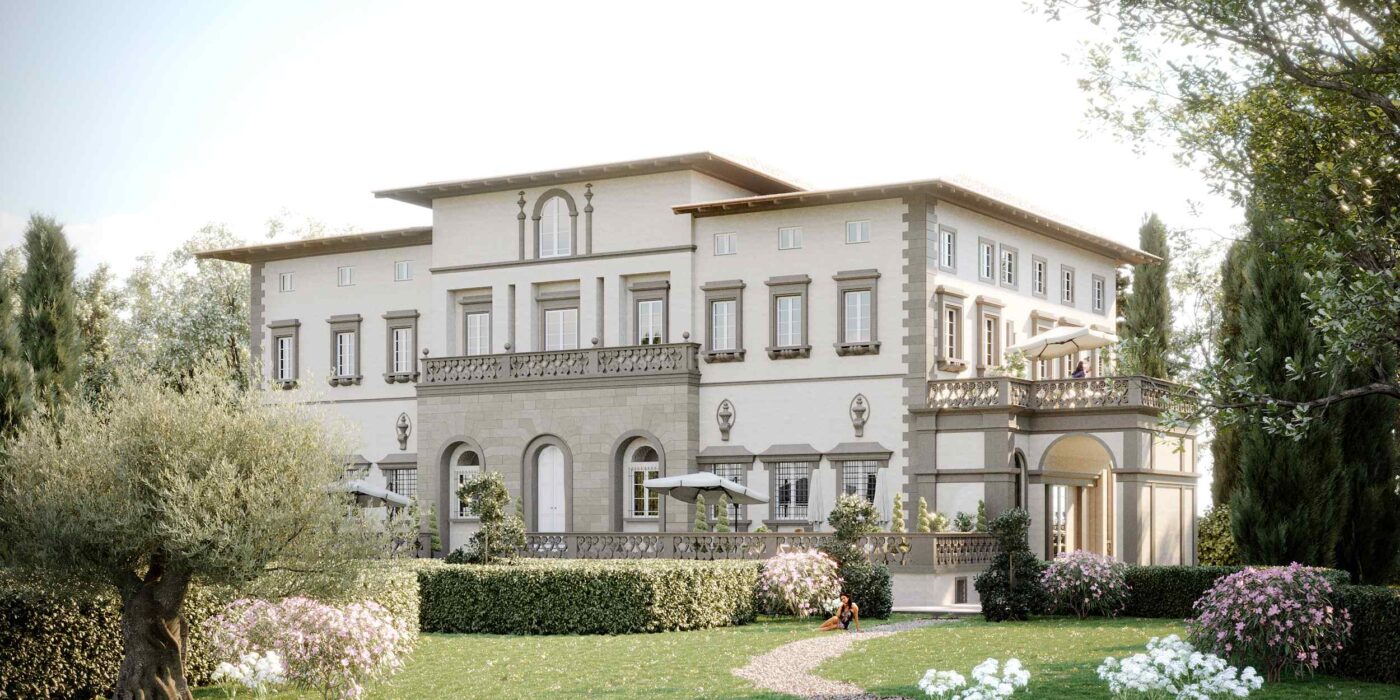Tuscany: The Crown Jewel of Italian Luxury Real Estate Shines for Global Investors
Columbus International, a real estate boutique with offices in New York, Miami, Milan, and Florence, serves as the ideal bridge between foreign investors and Tuscany’s prestigious real estate market.
The following statistics exclusively from Columbus International: Between April 5 and May 4, 2025, 7,000 potential buyers from New York contacted the agency for Tuscan properties, particularly interested in the prestigious Villa Covoni and a historic home in Settignano.
In the global luxury real estate landscape, Tuscany emerges as an unparalleled destination, commanding an impressive 20% of international searches according to LuxuryEstate.com. This leadership transcends mere statistics—it reflects a region that continues to captivate investors with its unique fusion of history, culture, and natural splendor that few locations worldwide can match.
The Tuscan supremacy is far from accidental. “Tuscany represents the quintessence of Italian excellence,” explains Paolo Giabardo, CEO of LuxuryEstate.com. “Florence offers an invaluable cultural heritage with its Renaissance masterpieces and architectural treasures, while the Versilia coastline combines sophisticated elegance with breathtaking landscapes, creating an investment opportunity that transcends monetary value and touches the soul.”
This phenomenon extends beyond the traditional allure of Tuscan vineyards and cypress-lined hills. The region has successfully evolved into a sophisticated investment ecosystem where historic palazzos stand alongside modern luxury villas, offering investors an extraordinary range of options. From restored medieval castles to contemporary waterfront properties, Tuscany provides a diverse portfolio that caters to the most discerning international clientele.
The competition for investor attention is fierce. Behind Tuscany, Lombardy and Lazio capture 17% and 11.5% of international preferences respectively. Milan and Rome, the economic powerhouses of these regions, attract investors who view luxury real estate not merely as a residence but as a strategic asset in an increasingly complex global portfolio. The appeal of these cities lies not only in their commercial significance but also in their ability to offer both lifestyle and financial returns.
Sardinia, securing 8.5% of preferences, completes the quartet of most coveted destinations. Its pristine beaches and exclusive developments have transformed the island into a luxury haven that rivals the French Riviera or the Caribbean. Meanwhile, Liguria and Sicilia maintain their strong appeal for second-home buyers (7.1% and 6.5% respectively), offering coastal properties that blend Mediterranean charm with modern amenities.
The geography of investors reveals fascinating patterns that speak to Italy’s enduring global appeal. Germany dominates the market in eight of the ten principal regions, reaching remarkable peaks in Trentino-Alto Adige (exceeding 50%) while maintaining a substantial presence in Tuscany (23%). This German preference reflects a long-standing cultural affinity and appreciation for Italian artistry and lifestyle.
Interestingly, France assumes a predominant role only in Lazio and Piedmont (14% each), suggesting a more focused investment strategy from French buyers. Poland emerges as an unexpected third player in searches for Sardinia and Sicily, indicating the growing wealth and international investment appetite of Eastern European high-net-worth individuals.
The metropolitan dynamics reveal unique characteristics: In Florence, Germany commands with 24.4%, nearly doubling France’s 12.4%. This disparity reflects Florence’s particular resonance with German culture and its historical connections. In Rome and Milan, however, Franco-German interest demonstrates more equilibrium, with slight margins favoring France (14.7% vs 14.2% in Rome, 11.2% vs 10.2% in Milan).
What makes Tuscany particularly compelling in today’s investment climate is its resilience and growth potential. Unlike many luxury markets that face saturation, Tuscany continues to offer opportunities for value appreciation while maintaining its exclusive character. The region’s strict preservation laws ensure that its historic and natural beauty remains protected, creating a scarcity value that discerning investors recognize.
The current market dynamics suggest that Tuscany’s position at the apex of Italian luxury real estate will only strengthen in the coming years. As global wealth continues to seek stable, tangible assets combined with lifestyle enhancement, Tuscany’s unique proposition—where centuries of art, culture, and natural beauty converge with modern luxury—positions it as an investment sanctuary that few regions can rival.
The message is clear: Tuscany is not merely a real estate destination; it represents an investment in la dolce vita itself, where history and modernity dance in perfect harmony, creating value that transcends traditional metrics and speaks to the aspirations of the world’s most sophisticated investors.
Source: Forbes Italy
